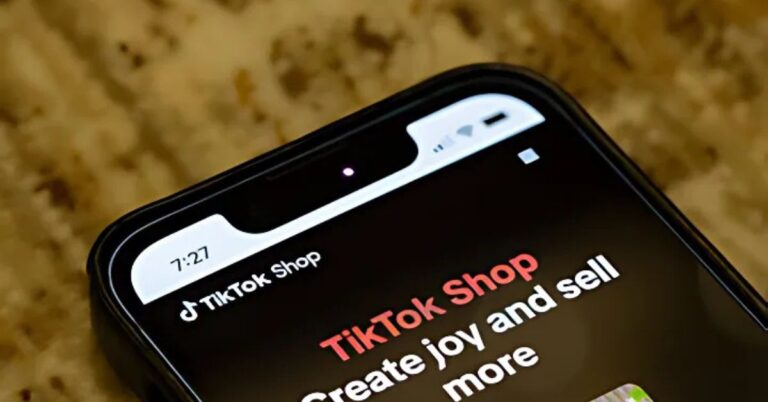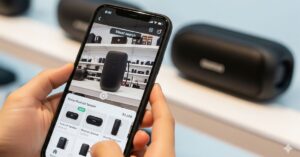
A closer look at the TikTok Shop Halo Effect and how viral success on the platform translates to increased brand awareness and sales across all your retail channels, including Amazon and your direct-to-consumer website.
With a user base soaring towards 2.35 billion globally by 2029, TikTok is no longer just a social media giant; it’s a primary engine of e-commerce. For brands, especially in the United States where over 121 million users reside, the platform’s influence extends far beyond its in-app “Shop” tab.
We’re now seeing the full impact of The TikTok Shop Halo Effect – a critical retail dynamic where viral product discovery and creator-led trust are directly fueling sales surges on external marketplaces like Amazon and a company’s own D2C site.
This article examines how this powerful, indirect sales driver works and why mastering it has become essential for omnichannel success in the current retail landscape.
How TikTok Shop Creates a Powerful Halo Effect
Martermind Behavior" Notably, 90% of TikTok users access the app daily, solidifying it as one of the most engaging social media platforms, second only to Instagram."
Alex Nisenzon, CEO of the data platform Charm.io, recently provided a detailed analysis of TikTok Shop’s explosive growth and its market dynamics. Speaking on a recent episode of the From Ecommerce Coffee Break podcast, he outlined the key mechanisms that drive both direct sales and indirect brand lift.
TikTok Shop has succeeded by seamlessly integrating e-commerce directly into its native social experience. This approach feels less abrasive to consumers, as product recommendations appear organically from creators they already follow and trust.
Nisenzon identified a “perfect storm” of factors that encourages users to make impulse purchases while scrolling. This combination removes friction and builds consumer confidence at the point of discovery.
- Trusted Creators: Content comes from influencers with whom users have already built a relationship and sense of trust.
- Engaging Content: The platform’s video format is highly engaging, often showing products in action and demonstrating their real-time benefits.
- Affordable Price Points: Products are generally affordable, with an average price point around $19, making the decision to purchase easier for consumers.
Success on the platform is almost entirely driven by a creator-centric model. Data shows a direct correlation between sales volume and the number of influencers a brand activates.
The most successful brands work with an average of 5,000 creators, with top shops activating upwards of 8,000 at a time. This massive scale is a key differentiator from marketing on other platforms.
Interestingly, this creator-led ecosystem gives an advantage to medium-sized brands over larger, more established corporations. This is because larger brands often have strict guidelines and are unwilling to relinquish the control necessary to work with thousands of creators.
The platform’s growth has been unprecedented, achieving a scale in just 24 months that took a marketplace like Amazon nearly 15 years. In 2023, TikTok Shop generated approximately $27 billion in Gross Merchandise Volume (GMV) globally.
In the U.S. market, purchasing is currently centered on specific categories like beauty, health, and women’s apparel. Within these verticals, top-selling items include cosmetics, personal care accessories, vitamins, supplements, and athleisure.
Nisenzon explains that TikTok Shop functions as both a bottom-of-funnel sales channel and a crucial top-of-funnel awareness mechanism. This creates the “halo effect,” where high visibility on TikTok leads to a lift in sales on other channels, such as Amazon and a brand’s own website.
For brands looking to enter the space, the first step is to use data to understand the category size and identify leading competitors. Further analysis can reveal optimal product assortments, pricing strategies, and the specific creators driving revenue for top players.
Understanding the Behavior Driving the Halo Effect For The Modern Shopper
Recent analysis of social media user behavior helps explain the mechanics behind the powerful TikTok Shop Halo Effect. Insights From Stacked Marketer reveal a significant shift in how consumers use platforms to research brands and make purchasing decisions in 2025.
Social media platforms have evolved from simple content channels into primary hubs for product and brand research. Data shows a massive 71% of TikTok users now use the platform specifically to find information about products and brands.
In today’s crowded market, consumers often require two, three, or even more touchpoints before committing to a purchase. This makes a brand’s social media page a critical storefront where users go to educate themselves and build trust.
Analysis shows what makes a first encounter on social media likely to lead to further research and an eventual purchase. Notably, followers of influencers are generally more inclined to research products compared to the average user.
Key triggers for this deeper research include:
- The product matched their current needs (41%).
- It aligned with their personal style or aesthetic (28%).
- They saw the product featured in a platform ad (22%).
- It represented a lifestyle they aspire to have (19%).
- They saw an influencer using or wearing it (15%).
Trust is the single most critical factor in forming a meaningful connection between a brand and a consumer, cited by 66% of users. Beyond this, shoppers feel a strong connection when a brand aligns with their personal values and understands their specific wants.
This connection provides significant leverage, as 76% of connected customers are more likely to buy from that brand over a competitor. Furthermore, it improves customer retention and turns shoppers into brand ambassadors who provide recommendations.
Key Insights for Maximizing the Halo Effect
1. Unify Your Brand Identity Ensure your brand’s appearance – logos, colors, and voice – is consistent across TikTok, your DTC site, and your Amazon Storefront. A unified presence builds immediate trust and recognition for customers discovering you for the first time.
2. Engineer a Clear Customer Journey Your TikTok is the top of your sales funnel, so guide users effectively. Use a link-in-bio tool to send traffic to a dedicated landing page with clear options like “Shop on Amazon” or “Shop Our Website,” allowing customers to choose their preferred channel.
3. Create Action-Oriented Content Design your TikTok content and influencer campaigns to spark off-platform action. Create videos that trigger searches for your product on Amazon and align your TikTok promotions with your Amazon sales events to drive targeted, high-intent traffic.
4. Implement Robust Measurement To optimize the halo effect, you must measure its impact. This involves tracking branded search volume spikes, using channel-specific discount codes, and properly implementing advanced tools like Amazon Attribution. Many sellers partner with an Amazon agency to manage this complex data and provide a clear picture of cross-channel ROAS.
Haus.io"The TikTok halo effect is when brand visibility on the platform drives sales on other channels, like Amazon, as users discover products and later search for them to purchase."






